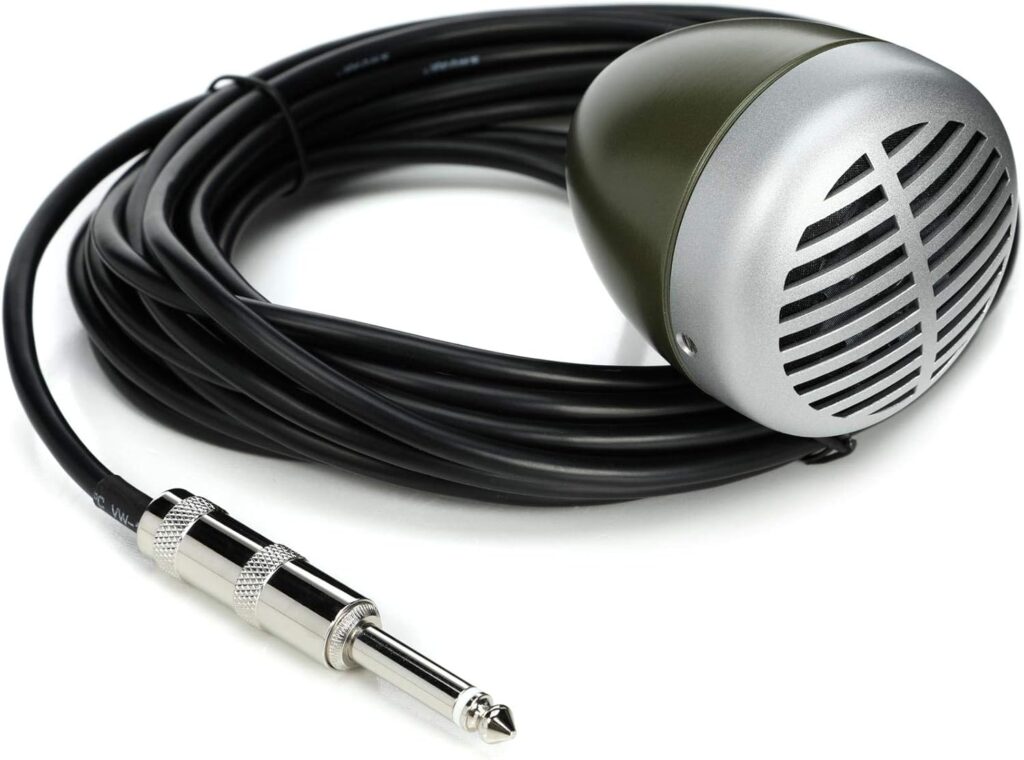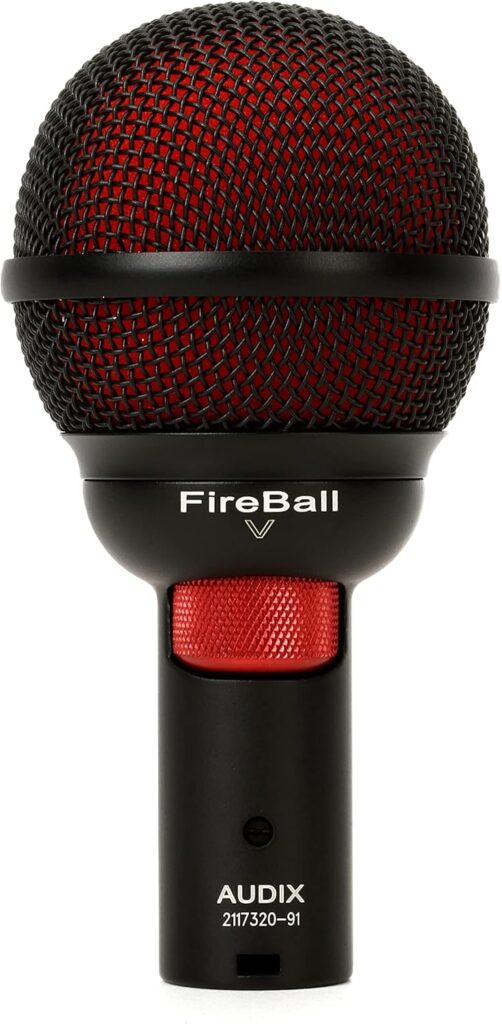Best Harmonica Microphones
The harmonica, with its soulful wail and versatile tone, is a cornerstone of genres like blues, folk, country, and rock. However, capturing its rich sound—whether for live performance or recording—requires the right microphone. Harmonica players often face unique challenges: the instrument’s wide dynamic range, the need for hands-free operation, and the desire to shape tone through cupping techniques. The best harmonica microphones amplify the instrument’s natural qualities while offering durability, tonal control, and compatibility with effects like distortion or reverb.
Unlike vocal mics, harmonica microphones are typically held in the player’s hands, cupped tightly to create a sealed chamber that enhances tone and allows for effects like wah-wah or vibrato. This demands a mic that’s rugged, compact, and responsive to acoustic nuances. Dynamic microphones dominate this category due to their durability and ability to handle high sound pressure levels (SPL) without distortion—crucial for the harmonica’s piercing highs and gritty lows.
Key considerations include:
- Polar Pattern: Cardioid or supercardioid patterns are common, reducing feedback in live settings.
- Frequency Response: A tailored response (often 100 Hz–5 kHz) emphasizes the harmonica’s midrange punch.
- Impedance: High-impedance mics pair well with vintage amps or effects pedals, while low-impedance options suit modern PA systems.
- Build: A sturdy design withstands the rigors of gigging and hand-cupping.
With these factors in mind, let’s explore the best harmonica microphones on the market.
What is the Best Harmonica Microphones?
Here is my top picks for the best harmonica microphones this year.
- Shure Green Bullet (520DX)
- Hohner Blues Blaster (MB30)
- Audix FireBall
- Bulletini by BlowsMeAway Productions
- Shure SM57
- Superlux D112/C
I will start with my favorite picks for the best harmonica microphones in 2025.
1. Shure Green Bullet (520DX)
The Shure 520DX “Green Bullet” is the gold standard for harmonica players, synonymous with the raw, gritty sound of Chicago blues. Introduced decades ago, it remains a favorite in 2025 for its iconic design and unmistakable tone.
- Features:
- Dynamic element with a cardioid polar pattern.
- Frequency response: 100 Hz–5 kHz, accentuating mids for that classic blues growl.
- High-impedance output, ideal for pairing with tube amps or distortion pedals.
- Rugged metal casing with a retro green-and-chrome finish.
- Built-in volume control knob.
- Strengths: The Green Bullet excels at delivering a fat, saturated tone when cupped tightly, making it perfect for amplified blues or rock. Its high-impedance design drives vintage amps into overdrive effortlessly, a trick beloved by players like Little Walter or James Cotton. The volume knob adds onstage versatility, letting you adjust gain without reaching for the amp.
- Drawbacks: Its focused frequency range sacrifices some clarity in the highs and lows, which might not suit players seeking a clean, acoustic sound. It’s also prone to feedback if not handled carefully in loud environments.
- Best For: Blues purists, amplified players, and anyone chasing that vintage tone.
2. Hohner Blues Blaster (MB30)
Hohner, a titan in harmonica manufacturing, brings its expertise to the microphone world with the Blues Blaster MB30. Designed with blues harpists in mind, it’s a worthy contender to the Green Bullet.
- Features:
- Dynamic cartridge with a tailored frequency response (80 Hz–6 kHz).
- High-impedance output for amp compatibility.
- Lightweight, ergonomic shell for comfortable cupping.
- Durable construction with a matte black finish.
- Strengths: The Blues Blaster offers a slightly broader frequency range than the Green Bullet, capturing more detail in the harmonica’s upper register. Its lighter weight reduces hand fatigue during long gigs, and its tone leans warm and punchy—ideal for both amplified and semi-acoustic settings. It’s also priced competitively, appealing to beginners and pros alike.
- Drawbacks: Some players find its output less aggressive than the Shure 520DX, which might disappoint those craving maximum distortion. The build, while solid, feels less tank-like than its Shure rival.
- Best For: Versatile players who want a balance of tone and affordability.
3. Audix FireBall
The Audix FireBall is a modern marvel, blending cutting-edge design with harmonica-specific functionality. It’s gained a cult following among players who value clarity and innovation.
- Features:
- Dynamic hypercardioid capsule.
- Frequency response: 50 Hz–16 kHz, unusually wide for a harmonica mic.
- Low-impedance output (150 ohms), perfect for PA systems or recording.
- Compact, cylindrical shape with a red-and-black finish.
- High SPL handling (up to 140 dB).
- Strengths: The FireBall’s hypercardioid pattern minimizes feedback, making it a top pick for loud stages. Its extended frequency response captures the harmonica’s full spectrum, from deep bends to crisp highs, ideal for recording or clean amplification. The low-impedance design ensures compatibility with modern setups, and its small size fits snugly in the hand.
- Drawbacks: The clean, hi-fi sound might lack the raw edge some blues players crave. It also requires an impedance-matching transformer (like the Shure A85F) for use with high-impedance amps.
- Best For: Recording artists, live performers with modern rigs, and players seeking pristine sound.
4. Bulletini by BlowsMeAway Productions
A boutique offering, the Bulletini is a custom-crafted microphone from BlowsMeAway Productions, a company dedicated to harmonica gear. It’s a compact twist on the bullet mic tradition.
- Features:
- Dynamic element (often a vintage crystal or controlled reluctance cartridge).
- High-impedance output.
- Ultra-small bullet shape (about half the size of a Green Bullet).
- Handmade with premium components.
- Strengths: The Bulletini shines with its portability and tonal warmth. Its tiny size allows for tight cupping and precise control, producing a rich, vintage sound with crystal or CM/CR elements. Each unit is hand-tuned, offering a bespoke feel that mass-produced mics can’t match. It’s a favorite among players who gig frequently and want a unique edge.
- Drawbacks: Availability is limited due to its artisanal production, and the price reflects the craftsmanship. The small size might feel awkward for players with larger hands.
- Best For: Tone chasers, gigging pros, and those who value exclusivity.
5. Shure SM57
While not a dedicated harmonica mic, the Shure SM57—a legendary all-purpose dynamic microphone—deserves a spot on this list for its versatility and widespread use among harp players.
- Features:
- Cardioid dynamic capsule.
- Frequency response: 40 Hz–15 kHz.
- Low-impedance output (310 ohms).
- Rugged steel grille and body.
- Strengths: The SM57 delivers a clean, balanced sound that works for both acoustic and amplified harmonica. Its wide frequency range makes it a studio favorite, capturing nuances other mics might miss. Onstage, it’s feedback-resistant and nearly indestructible. Pair it with a cupped hand or a bullet-style adapter, and it rivals purpose-built mics.
- Drawbacks: It lacks the high-impedance punch of bullet mics, requiring additional gear (like a transformer or preamp) for that classic overdriven tone. Its larger size can also hinder tight cupping.
- Best For: Multi-instrumentalists, studio players, and budget-conscious beginners.
6. Superlux D112/C
The Superlux D112/C is a budget-friendly bullet mic that punches above its weight, offering Green Bullet vibes at a fraction of the cost.
- Features:
- Dynamic cardioid element.
- Frequency response: 100 Hz–6 kHz.
- High-impedance output.
- Green metallic finish with a volume knob.
- Strengths: For under $50, the D112/C delivers a surprisingly robust tone, with mids that cut through the mix and a design that mimics the Shure 520DX. It’s a fantastic entry point for new players or a reliable backup for veterans. The volume control adds practicality.
- Drawbacks: Build quality isn’t as durable as premium options, and the sound lacks the depth and character of higher-end mics. It’s also more feedback-prone in chaotic live settings.
- Best For: Beginners, casual players, and those on a tight budget.
The Bottom Line
The best harmonica microphone is the one that amplifies your voice—both literally and artistically. Whether you’re channeling the ghosts of the Delta blues with a Shure Green Bullet, cutting through a mix with an Audix FireBall, or exploring boutique tones with a Bulletini, each mic on this list offers something special. Experimentation is key: try different models, tweak your cupping technique, and pair them with your rig to find your signature sound. In 2025, the harmonica’s legacy continues to thrive, and with the right microphone, your playing can resonate louder and truer than ever.


